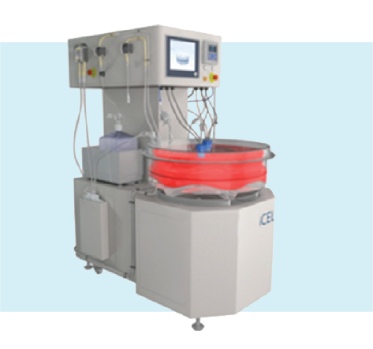PackGene provides GMP-grade plasmid manufacturing services for cloning, amplification, and purification of plasmids to support subsequent GMP-grade AAV production as well as other applications. Our segregated ISO-classified plasmid manufacturing suite (10,700 ft²) has been fully operational since September of 2021. We provide GMP-grade plasmid vector cloning, amplification, and purification services and cover large-scale fermentation, material isolation, full traceability documentation control, and comprehensive quality control assays. Our expert team will work with you to design a customized project proposal that meets your specific needs.
Bacteria bank generation
Quality control inspection and report
Single-use fermentation (50L to 200L)
Batch record, manufacturing summary report, CoA
Ultra-filtration & AKTA ready purification system
| PackGene plasmid process | GMP (Phase I & II) |
GMP (Phase III and commercialization) |
| Clone screening | √ | √ |
| Growth condition optimization | √ | √ |
| High density fermentation | √ | √ |
| Alkaline lysis | √ | √ |
| Chromatographic purification | √ | √ |
| Antibiotics free | √ | √ |
| Consistent manufacturing process | √ | √ |
| Instrument calibration/validation | Validation | Validation |
| COA & CoC | COA, CoC | COA, CoC |
| TSE/BSE | √ | √ |

| Test | Methods |
| Appearance | Visual inspection |
| A260:280 | Ultraviolet-visible spectrophotometry (A260/A280) |
| Homogeneity | HPLC |
| Restriction Analysis | Agarose gel |
| Residual RNA | SYBRGold |
| Residual E. coli DNA | qPCR |
| Endotoxin | LAL |
| Bioburden Testing | Direct inoculation |
| Sequencing | Sanger |
| Antibiotics Free Production | – |
| Residual Host Protein | HCP ELISA |
| Animal Free Production* | – |
| Mycoplasma Contamination | qPCR |
| Material Archiving | – |
| pH | Potentiometry |
| Kan | ELISA |
| Sterility | |
| Osmolality |

| Assay | Method |
| Plasmid Yield | Ultraviolet-visible spectrophotometry (A260) |
| Final Product Appearance Testing | Plasmid Visual Testing |
| Host Cell Identity | Bacterial Colony Morphology |
| Host Cell Identity | Gram Stain Analysis |
| Physiological and Biochemical Detection | IMViC test |
| Host Cell Purity | LB Agar |
| Cell Bank Viability | CFU/mL plate count analysis |
| Antibiotic Resistance | CFU isolation on multiple antibiotic and antibiotic-free plates |
| Phage Contamination | Plate bacterial cells on media containing no antibiotics |
| DNA Homogeneity | Densitometry analysis of EtBr stained AGE |
| Identity | EtBr stained agarose gel electrophoresis |
| Restriction Digest | EtBr stained agarose gel electrophoresis |
| Plasmid Identity | Double Stranded Primer Walking Sequencing. |
| Plasmid Retention | Antibiotic Typing |
| Plasmid copy number | Report |
Are pH measurements required, and is a large amount of sample wasted to carry out pH measurements?
Measurement of pH is a mandatory for the release of rAAV Fast Service deliverables. A micro pH electrode may be used to save sample and thus the required sample volume to perform pH measurements is only ~15uL-100uL.
What is loading?
In accordance with the Pharmacopoeia General Rules 0942, we use the minimum filling quantity inspection method for detecting sample loading quantity.
How to interpret A260/A280 value?
A260/A280 is the ratio of sample absorbance measured at wavelengths of 260nm and 280nm. This measure is commonly thought to represent the ratio of DNA to protein in a sample. For rAAV, A260/A280 can used as a measure of the full to empty shell rate and to identify protein contamination. Low A260/A280 levels may suggest that the empty shell rate is high. Alternatively, high A260/A280 may suggest that the sample has been contaminated with proteins that are not incorporated into the AAV capsid shell. The greatest advantages of this measure are its convenience and speed.
What tests are performed to differentiate rAAV capsid proteins from specific protein impurities?
SDS-PAGE is used to identify rAAV capsid proteins. In addition, SDS-PAGE can be used to directly identify specific protein impurities including the presence of host proteins, BSA, or degraded AAV capsid proteins.
CDMO Plasmid Flyer
Related Services

Plasmids GMP Services
Multiple scales & grade of solutions of various kind of plasmids suitable for multiple treatments in a fast and cost effective way
READ MORE

AAV GMP Services
Ranging from small-scale AAV production, to large-scale AAV cGMP manufacturing for animal studies
READ MORE

Technology Platforms
PackGene’s proprietary π-Alpha 293 AAV High-yield Platform increases AAV production by 3 to 8 times that of traditional platforms.
READ MORE

